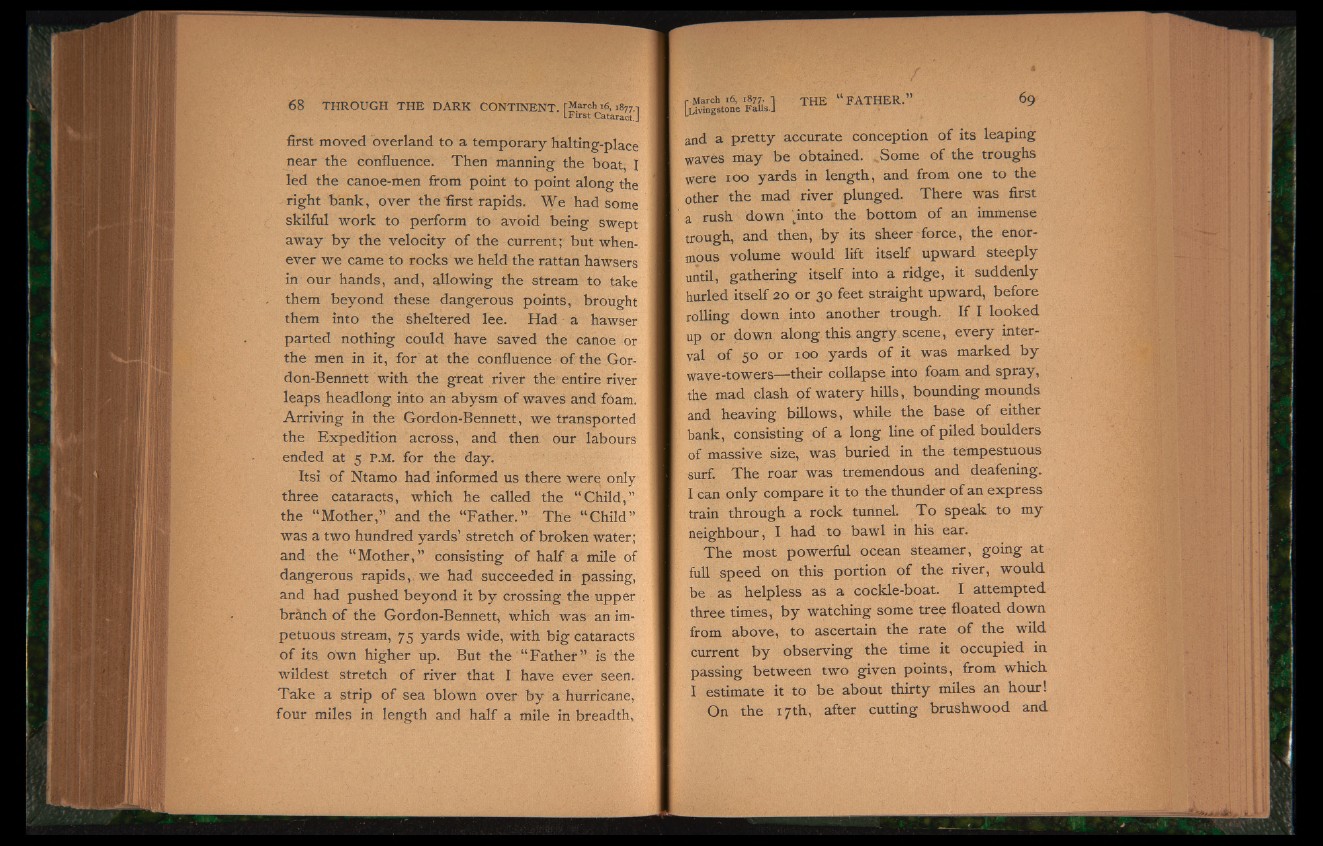
first moved overland to a temporary halting-place
near the confluence. Then manning the boat I
led the canoe-men from point to point along the
right bank, over the first rapids. We had some
skilful work to perform to avoid being swept
away by the velocity of the current; but whenever
we came to rocks we held the rattan hawsers
in our hands, and, allowing the stream to take
them beyond these dangerous points, brought
them into the sheltered lee. Had a hawser
parted nothing could have saved the canoe or
the men in it, for at the confluence oftheGor-
don-Bennett with the great river the entire river
leaps headlong into an abysm of waves and foam.
Arriving in the Gordon-Bennett, we transported
the Expedition across, and then our labours
ended at 5 P.M. for the day.
Itsi of Ntamo had informed us there were only
three cataracts, which he called the “ Child,”
the “Mother,” and the “Father.”' The “ Child”
was a two hundred yards’ stretch of broken water ;
and the “Mother,” consisting of half a mile of
dangerous rapids, we had succeeded in passing,
and had pushed beyond it by crossing the upper
branch of the Gordon-Bennett, which was an impetuous
stream, 75 yards wide, with big cataracts
of its own higher up. But the “ Father” is the
wildest stretch of river that I have ever seen.
Take a strip of sea blown over by a hurricane,
four miles in length and half a mile in breadth,
and a pretty accurate conception of its leaping
waves may be obtained. ..Some of the troughs
were 100 yards in length, and from one to the
other the mad river plunged. There was first
a rush down dnto the bottom of an immense
trough, and then, by its sheer force, the enormous
volume would lift itself upward steeply
until, gathering itself into a ridge, it suddenly
hurled itself 20 or 30 feet straight upward, before
rolling down into another trough. If I looked
up or down along this angry scene, every interval
of 50 or x 00 yards of it was marked by
wave-towers— their collapse into foam and spray,
the mad clash of watery hills, bounding mounds
and heaving billows, while the base of either
bank, consisting of a long line of piled boulders
of massive size, was buried in the tempestuous
surf. The roar was tremendous and deafening.
I can only compare it to the thunder of an express
train through a rock tunnel. To speak to my
neighbour, I had to bawl in his ear.
The most powerful ocean steamer, going at
full speed on this portion of the river, would
be as helpless as a cockle-boat. I attempted
three times, by watching some tree floated down
from above, to ascertain the rate of the wild
current by observing the time it occupied in
passing between two given points, from which
I estimate it to be about thirty miles an hour!
On the 17th, after cutting brushwood and